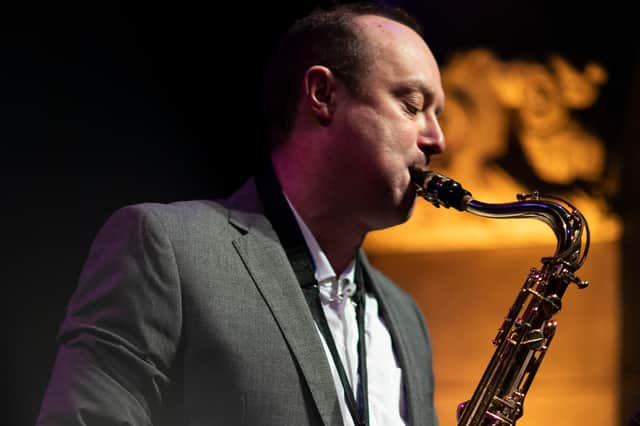

How to create a music portrait of a portraitist? Jim Gilchrist talks to jazz musician Martin Kershaw, who has been commissioned by the National Galleries of Scotland to write a suite inspired by their Sir John Lavery exhibition
It’s tempting, if glib, to ask, how does a jazz musician portray a portraitist? In fact Sir John Lavery, sometimes known as “the Belfast-born Glasgow Boy”, may have made his name initially as a society portraitist, but he was also a compulsive traveller and painter of outdoor scenes, and it is largely that facet of his art that informs Rhapsodies En Plein Air, a new suite by saxophonist and composer Martin Kershaw, which will have its first performance, complete with a backdrop of Lavery paintings, at the Royal Scottish Academy in Edinburgh on 24 October.
The music was commissioned by National Galleries of Scotland (NGS) to tie in with their current exhibition, An Irish Impressionist: Lavery on Location, at the RSA until 27 October. Kershaw, a familiar presence on the Scottish jazz scene, had initially approached NGS in connection with this year’s centenary of the Edinburgh-born sculptor Eduardo Paolozzi, inspiration for Kershaw’s award-winning album of 2010, Hero As Riddle.
Instead, however, NGS’s adult programme co-ordinator, Grainne Rice, asked whether Kershaw would be interested in composing something for the Lavery exhibition they were planning. Lavery, who died in 1941, wasn’t an artist Kershaw had come across, he explains. “But Grainne, who had heard my Paolozzi stuff and liked it, showed me examples of his work and asked would I like to do it.”
Kershaw picked eight of the pictures from the exhibition, writing a piece for each. They’ll be performed by a quartet comprising himself on clarinet and alto saxophone, old associates pianist Paul Harrison and guitarist Graeme Stephen, and double bassist Douglas Whates.
The pieces include the exhibition’s poster canvas, Windy Day, depicting a wind-blown woman on a beach, to which Kershaw has responded with breezily rippling music, while Grey Summer’s Day, Grez is more pensive, impressionistic even, responding to Lavery’s characteristically oblique approach, with two slightly enigmatic figures offset from the direct view to a river.
Another image, reflected in the melancholy stillness of a solo piano piece, is The Cemetery, Étaples, 1919, with its stark rows of crosses while, in the distance, a train steams past. Kershaw regards that juxtaposition as characteristic of Lavery as an observer: “You have this very sombre image then this very dynamic thing in the background. That was something that attracted me to him – little contradictions and juxtapositions of ideas in his work that add to its impact. Grey Summer’s Day is like that. He’s not going for July sunshine and French fields, but something more subtle that I think adds layers to it.”
The Tennis Match, on the other hand, is a sly observation of a straw-boatered chap doing more chatting up of the woman beside him than racket swinging. “The tennis is peripheral,” comments Kershaw. “I decided, rightly or wrongly, that this gentlemen is trying to charm the lady, who is leaning back, maybe not that keen on him.”
The musical result includes what Kershaw describes as “a twisted foxtrot”. In contrast is An Irish Girl, Lavery’s striking portrait of Kathleen MacDermott, who became his first wife, only to die of tuberculosis two years later, and whom Kershaw evokes with a dance-like section that ends on a gently melancholy note.
“I really enjoy writing music in this way; it makes me access other areas of my imagination,” He laughs: “I’ve never written a foxtrot before, but this was what I was feeling from that picture.”
Amid his other commitments, Kershaw, along with guitarist Stephen, bassist Mario Caribé and drummer Tom Bancroft, is a co-founder of the award-winning collective Playtime, hosting regular “new adventures in music” in Edinburgh’s Outhouse. Regularly, that is, except during the abysmal silence of lockdown.
Playtime’s newly released album, Morse Code Through the Lights, all improvised and ingeniously live-streamed during lockdown, demonstrates forcefully what they achieved “through necessity and happenstance”.
